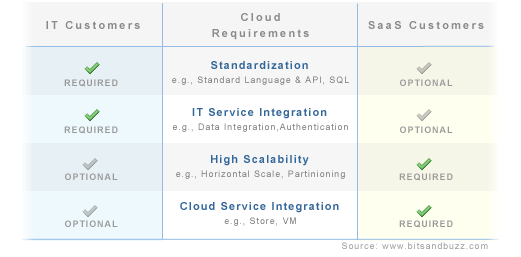February 23rd, 2011 by jeremychone | 1 Comment »

It has been interesting to see how the mobile market unilaterally went the “local-application” way, while the PC market had moved away from it a decade ago. Skype was probably the last new desktop application to be adopted by the masses.
Read the rest of this entry »
Posted in Mobile | 1 Comment »
February 16th, 2011 by jeremychone | Comments Off

Undeniably, HTML5 has created quite a buzz for itself over the last 12 months or so, leading some of us to question whether or not HTML5 is worth all of this attention. Or as, someone on Quora asked, Why is HTML5 worth all of the hype?
If there were only one reason as to why HTML5 is definitely worth all of the interest it has attracted, it would be the following:
Read the rest of this entry »
Posted in HTML5, Web 2.0 | Comments Off
March 1st, 2010 by jeremychone | 10 Comments »

When looking at the future of the mobile market, we can clearly see two big contenders, Apple and Google. While Apple has a definite head start, Google mobile’s strategy and execution has been impressive. In the last couple of years, Google has managed to create an open platform, engage with a wide variety of device manufacturer partners, and promote its own branded device. Although iPhone fans might disagree, it is fair to say that, with the latest Android 2.x generation of devices (i.e., NexusOne), there are fewer and fewer hardware and software differentiators between the two solutions.
The dilemma: iPhone is still the big gorilla
Read the rest of this entry »
Posted in Business, Mobile, Strategy | 10 Comments »
January 20th, 2010 by jeremychone | Comments Off

Undeniably, Apple, with the iPhone, has revolutionized the mobile market. Apple did what all mobile device manufacturers and service providers have dreamed of and failed to do for so many years, which was to make the phone an Internet device. A decade from now, nobody will argue that Apple was the company that reinvented what a phone could be.
However, the big question is how long the iPhone will stay the leader of the category it created. Will Apple maintain its market leadership against an ever-growing number of mobile device manufacturers and a variety of well-supported, open, modern mobile platforms (i.e. Android, and maybe Windows Mobile)? Most importantly, will Apple succeed at keeping mobile developers under its control?
Read the rest of this entry »
Posted in Mobile | Comments Off
October 15th, 2009 by jeremychone | 12 Comments »
 Apple is undeniably the most proprietary and closed technology company in the software industry. In fact, Apple makes companies like Microsoft and Adobe look like nonprofit open source organizations in comparison.
Apple is undeniably the most proprietary and closed technology company in the software industry. In fact, Apple makes companies like Microsoft and Adobe look like nonprofit open source organizations in comparison.
Apple’s iPhone product and marketplace have been the latest example of Apple’s excessive control. Apple ingeniously controls its iPhone platform at both the production and distribution levels. In practical terms, this means that iPhone developers must have the Apple SDK (which only runs on a Mac computer) to be able to produce an iPhone application (even if developers use other application SDKs, such as PhoneGap). Developers also must get the application approved by Apple in order to distribute it. Microsoft would not have even dared to dream of such a market scheme.
Nevertheless, at its annual event last week, Adobe demonstrated how developers can circumvent iPhone application’s production restrictions by using the upcoming Adobe Flash CS5 to produce native iPhone applications. And while this has little to nothing to do with putting Flash or AIR on the iPhone, it is big news for mobile developers. It will allow any developer on any platform (such as Mac or Windows) to develop iPhone applications.
As of now, Adobe’s solution lacks many of the most interesting iPhone APIs, but it is safe to assume that if Adobe is serious about promoting AS3, its language for native iPhone development, Adobe will provide full iPhone API access in the final release.
Read the rest of this entry »
Posted in Mobile, Strategy | 12 Comments »
September 16th, 2009 by jeremychone | Comments Off
One of the biggest fears of any IT manager about cloud computing is the lack of openness. In other words, they ask, “How easy is it to get in and out? Or they might ask, “How portable is a cloud application?”
Ideally, enterprises should be able to take applications and data in or out of a cloud as business requires without having to rewrite the application or transform the data.
As discussed in the article “Don’t Get Stuck in a Cloud ,” cloud portability tends to be a factor related to the type of cloud one uses.
Here is a quick portability analysis of the three big Clouds on the market:
Read the rest of this entry »
Posted in Enterprise Web 2.0 | Comments Off
September 16th, 2009 by jeremychone | Comments Off
Now that we have established that cloud computing is a real phenomenon that provides real technological and business value, the next question is how does it apply to the enterprise market?
To fully analyze this market opportunity, we need to realize that there are two related but different types of enterprise customers for cloud computing.
The first type is internal information technology (IT) organizations within the enterprise that are looking for more agile and cost-effective ways to manage their Internet application and services. The second type is the enterprise SaaS providers who want to leverage proven, highly-scalable architectures and integrate them into some cloud applications to increase functionality and maximize distribution.
IT and SaaS cloud customers have similar requirements but different priorities.
Here is a high-level view of some of the differences.

Read the rest of this entry »
Posted in Enterprise Web 2.0 | Comments Off
September 15th, 2009 by jeremychone | 2 Comments »

Mysterious, comforting, scary, and attractive are all possible adjectives to describe a cloud. Interestingly enough, this is true of all kinds of clouds, from the meteorological to the computing. During the last few years, we have a seen a proliferation of clouds forming from every corner of the Internet. Nowadays, it is very rare to see any Internet technology presentation without at least a few clouds.
So is cloud computing simply vaporware, or something tangible?
Read the rest of this entry »
Posted in Uncategorized | 2 Comments »
September 11th, 2009 by jeremychone | 9 Comments »

Jon Davis posted an interesting article discussing whether the Microsoft stack is really more expensive than open source alternatives.
Jon has a point; Microsoft’s restricted (i.e., Express) editions are as free as the open source alternatives. This is undeniably true, since the purpose of many software vendor’s “Express” edition is to compete against open source on price. However, the difference is that with open source you get the full-powered editions. For example, Linux (e.g., CentOs), Xen (for virtualization), PostgreSQL/MySQL, Apache, Java, Tomcat, AspectJ, Lucene, Hibernate, and Eclipse are all robust, full-featured, and powerful technologies available for free to developers. The variety and the quality of product available from the open source community are just astonishing.
Read the rest of this entry »
Posted in Enterprise Web 2.0 | 9 Comments »
August 12th, 2009 by jeremychone | 18 Comments »

While many see Microsoft Silverlight as an Adobe Flash killer, I actually think Adobe should rejoice that Microsoft is competing with Adobe on its own turf (i.e., media plug-ins) rather than putting all its energy, as it once did, into Web standards and innovation (IE 5.0 was the most robust and compliant Web browser of its time).
If Microsoft were to take a similar approach to the one it embraced in 1995, when it actually took the lead in Web technologies and provided the best Open Web browser implementation, new media functionalities such as video and 2D/3D would become an intrinsic part of the Web, making media plug-ins irrelevant to its future. In other word, if Microsoft were to go full Open Web (with SVG, Canvas, Smil, HTML 5, Video, and CSS3) Adobe Flash would be history in couple of years. However, Microsoft decided to follow Adobe’s plug-in strategy by forking visually rich capabilities into the plug-in world and throwing itself into a completely new market.
Why? Why follow when you can lead?
Read the rest of this entry »
Posted in Business, Enterprise Web 2.0, Strategy, Technology | 18 Comments »




 Apple is undeniably the most proprietary and closed technology company in the software industry. In fact, Apple makes companies like Microsoft and Adobe look like nonprofit open source organizations in comparison.
Apple is undeniably the most proprietary and closed technology company in the software industry. In fact, Apple makes companies like Microsoft and Adobe look like nonprofit open source organizations in comparison. 


